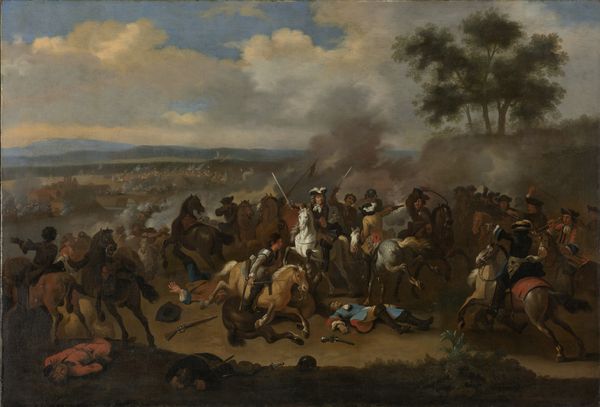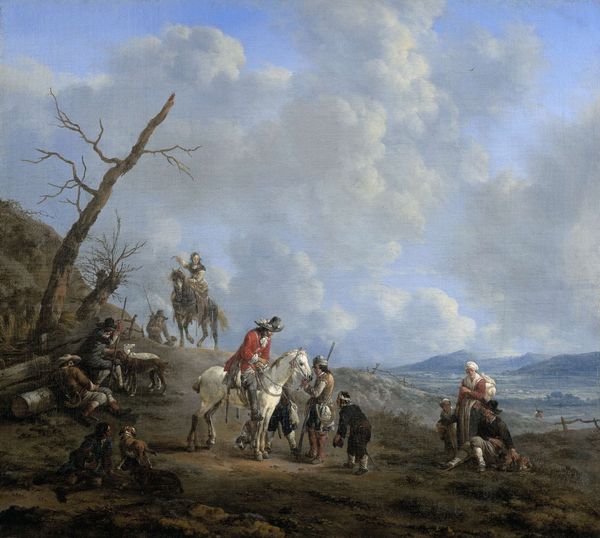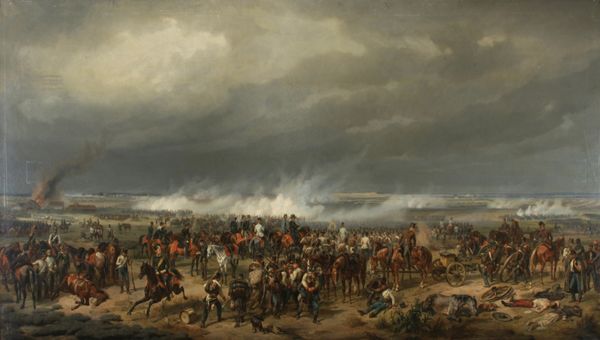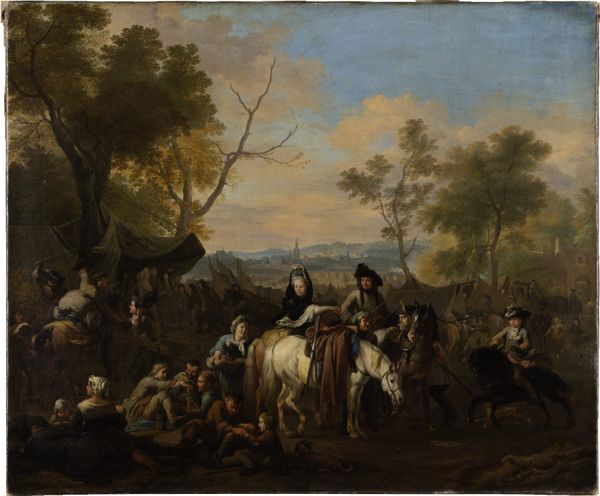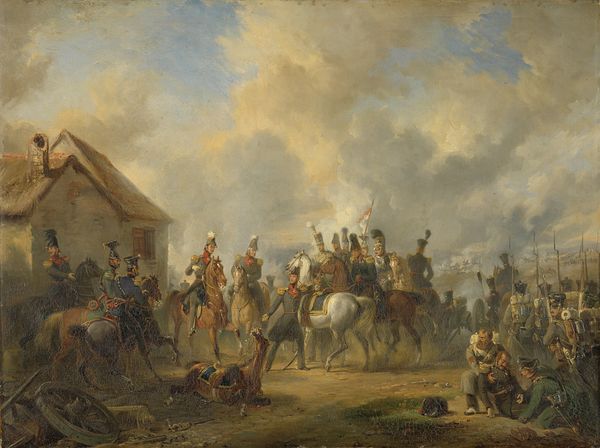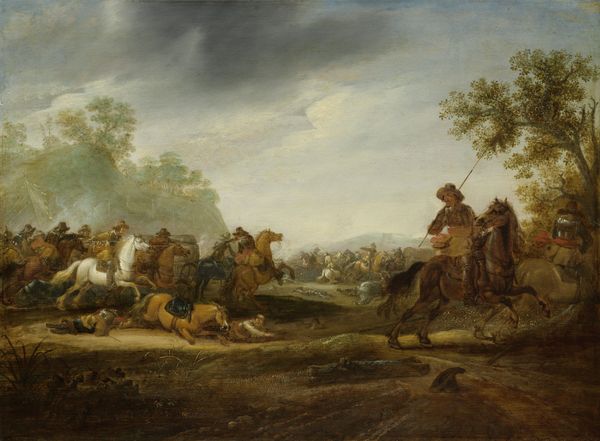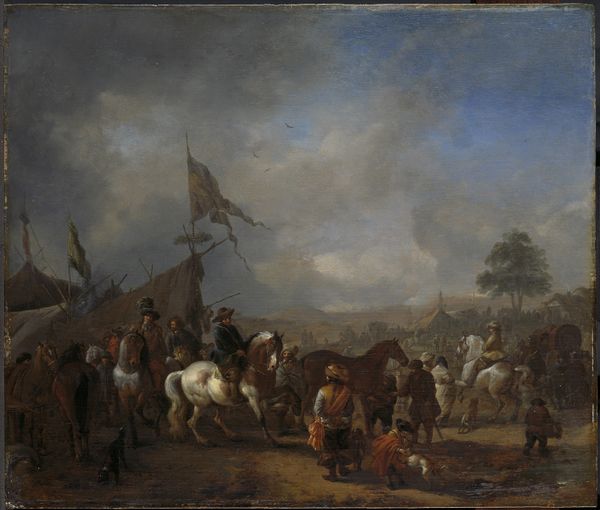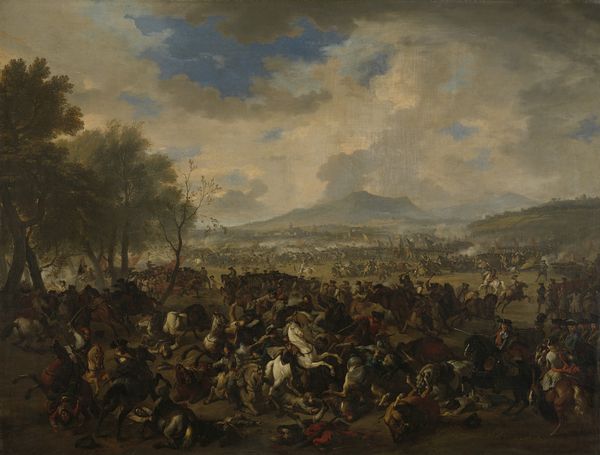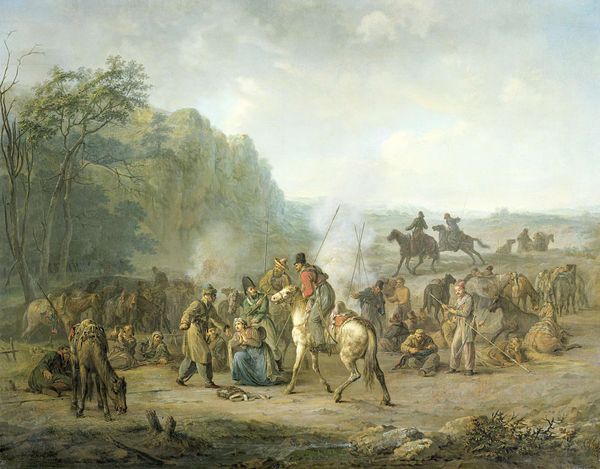
King Gustav II Adolf of Sweden at the Battle by Lützen November 16th, 1632 1634
0:00
0:00
painting, oil-paint
#
narrative-art
#
baroque
#
painting
#
oil-paint
#
landscape
#
figuration
#
oil painting
#
history-painting
Dimensions: 71 cm (height) x 93 cm (width) (Netto)
Editor: Here we have Jan Asselijn’s oil painting "King Gustav II Adolf of Sweden at the Battle by Lützen November 16th, 1632," created in 1634. It depicts a chaotic scene of battle, and honestly, I’m finding it hard to find a focal point amidst all the swirling figures. What strikes you about it? Curator: I see a painting saturated with the brutal economics of war. Look closely. Consider not just the artistry, but the *production* of this image. Oil paints, for example, weren’t merely aesthetic choices, they represented a material expenditure tied to specific socio-economic classes. Editor: So you're saying that the very *stuff* of the painting has a story to tell? Curator: Precisely. Asselijn was working for a market that valued depictions of power and military might. How was that power constructed materially? Consider the patronage system that supported this creation; wealthy elites eager to glorify their conquests funded these large-scale history paintings. This wasn't art for art's sake; it was a calculated display of dominance. Notice the sheer scale of the canvas. This asserts not just Gustav's authority but also the patron’s wealth. What processes underpinned warfare during that era? Editor: Thinking about it that way… I guess the creation of the painting echoes the mechanisms of war itself – resource allocation, labor, and, ultimately, consumption and display of victory. It shifts the focus from pure aesthetics to production, making it something that’s bought and sold. Curator: Exactly. Art as commodity, reflecting the social relations embedded in its creation. Understanding that, alters our perception entirely. It highlights the labor and money, extending beyond simple narrative. Editor: I never considered the socio-economic elements that enabled Asselijn to paint in the first place! Curator: Considering materiality exposes so much more of art history and helps create an impactful appreciation.
Comments
No comments
Be the first to comment and join the conversation on the ultimate creative platform.
